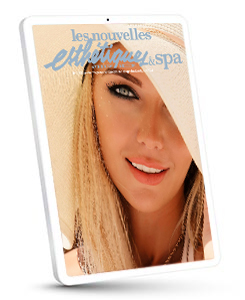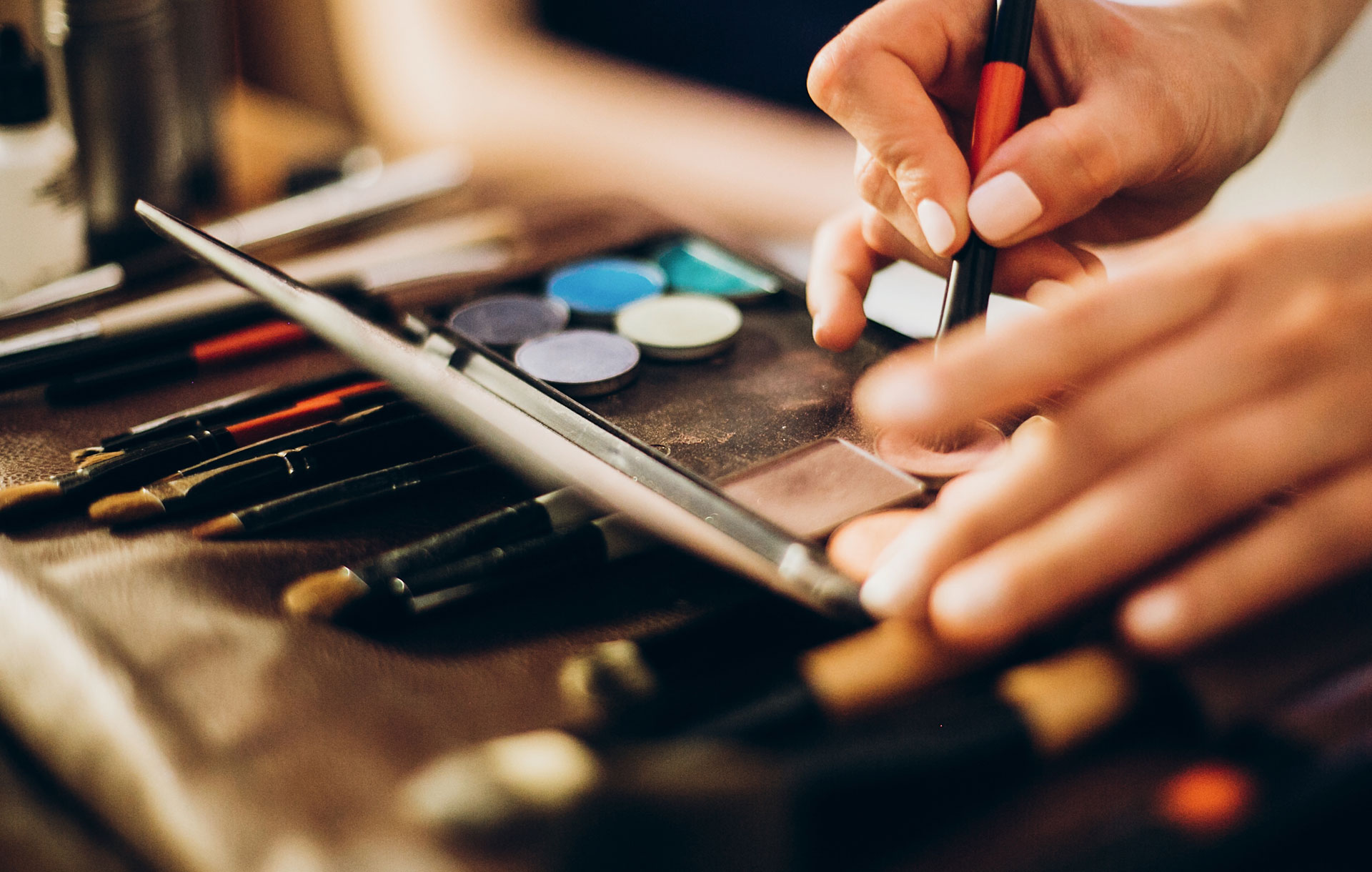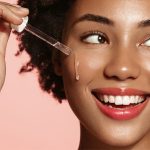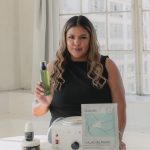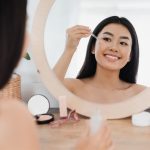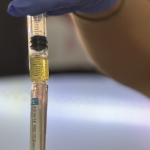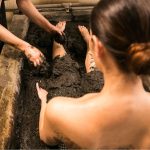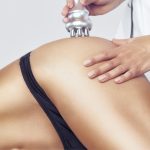Makeup Sanitation in the Spa
Sanitation is of great concern in the skin care, spa and makeup industries. Esthetics schools dedicate a large portion of their students’ learning to sanitation practices, and it is often required annually as part of license renewal for many specialists. The purpose of sanitation in the makeup field is mainly prevention of spreadable diseases between clients and artists. Ensuring your tools and product remain uncontaminated is an essential part of being a true professional. Although contamination from a professional makeup kit is rare, it still deserves your full attention and awareness as a duty to your clients to use the utmost care in protecting and preserving their skin health.
Sharing is caring, but not when it comes to makeup. Makeup applicators, brushes, mascara wands, puffs and sponges are waiting breading grounds for bacteria that can be transferred to makeup to skin and back again.
Eye infections are some of the most common makeup-related injuries. Commonly spread diseases include conjunctivitis (pink eye), cold sores (herpes simplex lesion), viral gastrointestinal infections and meningitis (typically from lip gloss). Eye makeup runs the highest risk of contamination and the eye area is particularly susceptible to infection. Clients may also suffer from common underlying eye problems such as blepharitis (an inflammation of the lid margin) and dry eye, making them less tolerant of contaminated makeup that can invade the tear film. Lip products can spread germs from saliva and lip infections. Liquids and creams are easily contaminated and may be impossible to sanitize.
Did you know that the most common cosmetic-related injury is caused by unsafe mascara application? An untreated corneal scratch by a mascara wand can lead to infections, corneal ulcers and in rare cases, blindness. Clients that sleep without removing mascara run the risk of flakes falling into the eye, causing itchy, bloodshot eyes as well as infections and corneal scratching. These injuries are easy to avoid. Encourage clients to apply mascara only when stationary, and remove eye makeup before bed.
As professionals, you should develop a set of practices that ensure your makeup applications are bacteria and infection free for all clients. This involves setting up your kit in an organized and clean fashion, and repeating sanitation practices frequently and between all clients. Here are some simple steps you can add to your daily routine:
1 Always, always wash your hands before touching a client. This is a given, but it bears repeating. For good measure, always wash up before touching your own face as well.
2 Choose your products wisely. Foundations with pump as opposed to screw-off caps are less susceptible to contamination. Toss sponges and puffs after each client, or opt for new silicone varieties on the market today that can be easily cleaned and disinfected.
3 Keep your station organized. Put away products after using them to avoid exposure to air and bacteria unnecessarily.
4 Wash your brushes! Some of us find this task therapeutic, some a chore. But makeup brushes harbor so much bacteria- it’s essential! Each client deserves the respect of having clean brushes used on them.
5 If your makeup comes in contact with a client who is sick or has an infection, it is advised to get rid of any potentially contaminated product. At the very list, throw away the mascara, eyeliner and any product used on the eyes.
6 Store your makeup in a cool, dry place, away from moisture and heat. Warm, moist makeup is a breeding ground for bacteria. Keep makeup containers closed tight, out of sunlight and avoid temperatures that exceed 85° F. Excess heat can ruin makeup and its preservatives.
7 It is not recommended to add liquid to product unless explicitly directed in the product instructions.
8 Don’t pump your mascara! This causes air to be driven into the tube that may be full of micro-organisms or promote the growth of bacteria that’s already there.
9 Research how your chosen products are manufactured. According to the FDA, many cases of contamination are due to manufacturers using poorly designed, ineffective preservative systems, and not testing the stability of the preservatives during the product’s customary shelf life and under normal use conditions.
10 Be mindful of product shelf life. Throw makeup away if the color changes or an odor develops. Separation doesn’t necessarily mean that a product has spoiled, but if the product does no incorporate after shaking, it’s best to throw it away.
These are the basic and simple recommendations for your personal kit, but they are simply not enough for professional makeup artists or for retail displays in which testers are accessible to the general public. In a retail setting, you may think that using a disposable applicator for testing makeup is sufficient, but there’s no guarantee that the product isn’t already contaminated. If you want to test a product, ask for a new tester. If you’ve no option but to use an open cosmetic tester, never apply it to skin that’s broken or abraded. In all cases, keep it away from your lips and eyes. Given that preservatives help keep makeup safe, think carefully before using a tester of preservative-free makeup.
Preservatives are one of the modern marvels that help keep our makeup safe and clean. Infection is less common because products have superior preservatives that protect the formula. While the use of preservatives is a controversial subject among some environmentally conscious artists and professionals, it’s undeniable that preservatives protect consumers and help maintain product integrity by combating microbial growth.
Products advertised as preservative-free may actually be less healthful than their chemically enhanced counterparts.
Most makeup artists are highly attentive to maintain sanitation standards in their professional practice. The hygiene of their tools is of the utmost concern. In some schools, artists are encouraged to maintain minimal hand to skin contact with their clients, and enforce heavy use of brushes and disposable applicators.
Products are mixed on a palette with a spatula; application is with a brush that is sanitized after every client; and disposable mascara wands are dipped once into a container and then discarded.
Clients should be made aware of the artist’s dedication to cleanliness and should feel free to ask any questions about the artist’s sanitation practices.
The sanitization process can sometimes be a challenge. Frequently, the only effective solution is a high concentration of alcohol- between 70 and 95 percent. Alcohol works effectively to kill 99.9 percent of bacteria when applied and let dry for 30 seconds. Artists should not use any products with less than 70 percent alcohol.
Many alcohol-based brush cleaners contain emollients that limit the drying effect of alcohol on brushes, but the formula may not be 70 per cent alcohol.
For pencils, sharpen between each client with a sharpener that’s been sanitized before use.
Emulsions, creams and pastes cannot be sanitized and it’s questionable if you can sanitize a pressed powder product without compromising its performance.
Lipstick, brushes and mixing palettes can be sanitized by using a 70 percent or greater alcohol solution and scrapping off a layer of product between each client appointment.
The occurrence of any contamination or infection on behalf of a client should always be met with a recommendation for medical care. In a retail setting, infection is commonly due to consumers not utilizing the proper tools when scooping out tester products or contaminating lipsticks, etc. If this has occurred in your practice, it is likely that the client or customer will blame the practice for their infection. Legally, causation must be proven with connects a cause and effect to the injury or infection.
Typically, it is difficult to prove because clients use many products from different place simultaneously. It is rare that an artist or a location would face legal repercussions, but it is wise to have a protocol in place for such occasions.
Makeup and skin care professional who retail or use makeup in their practice should have an established sanitization protocol in place to prevent any such problems. Consider creating a checklist for your own personal use or to implement for artists working under you to help commit to memory these 10 steps to clean beauty!
